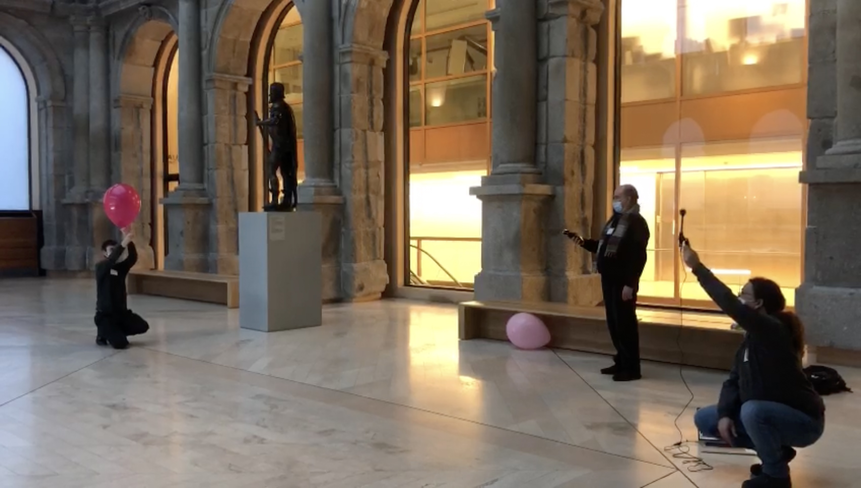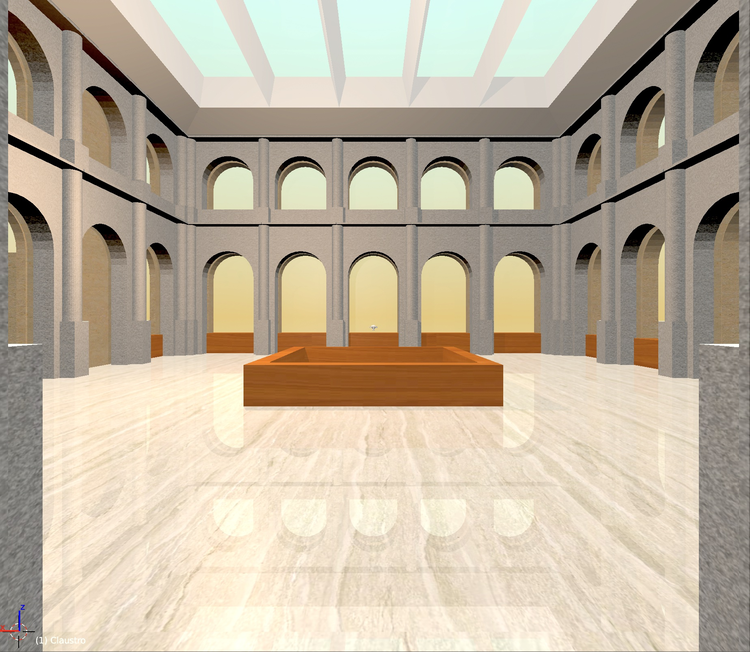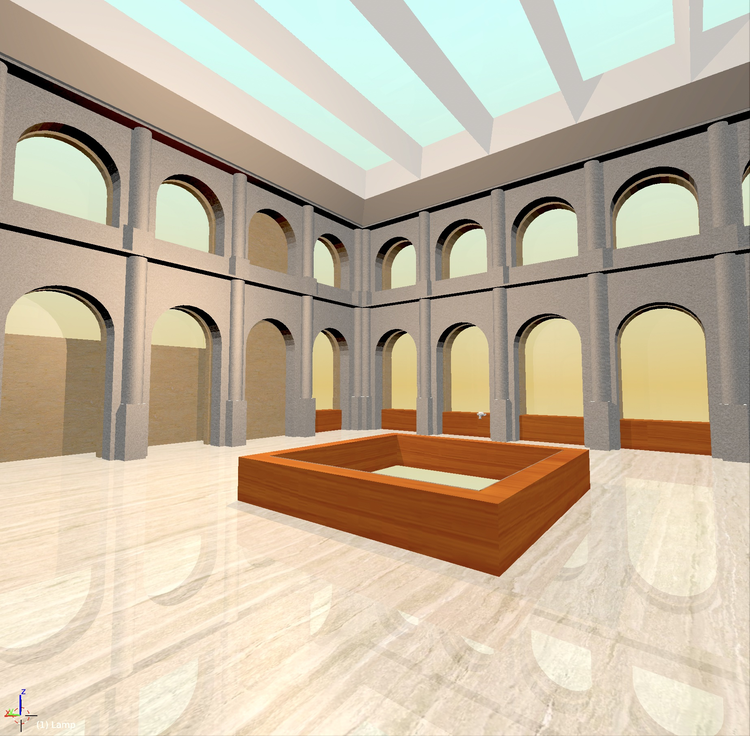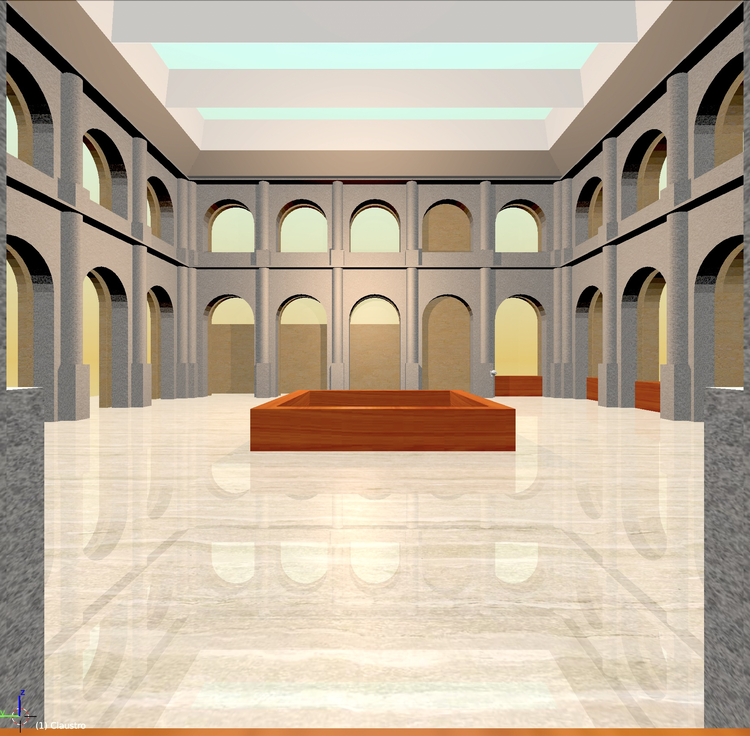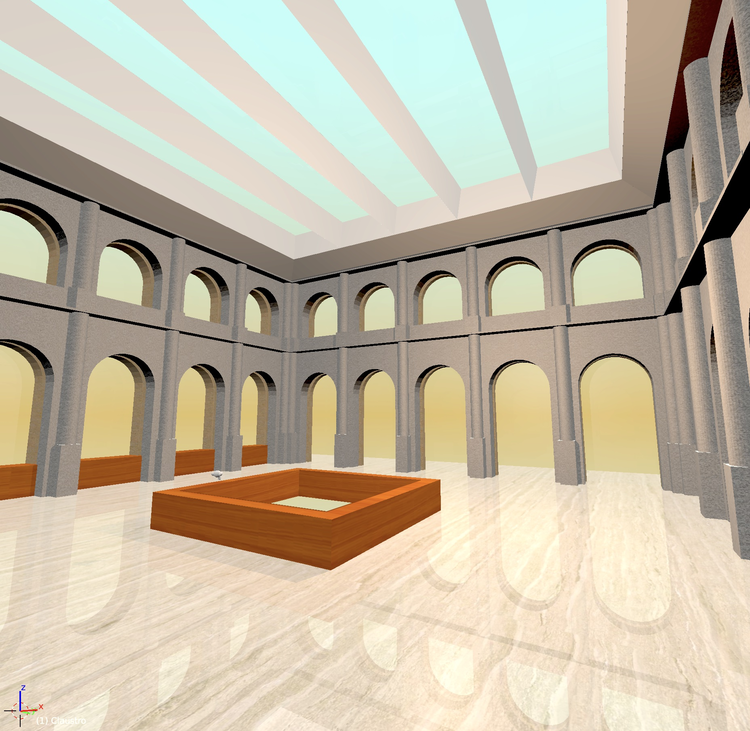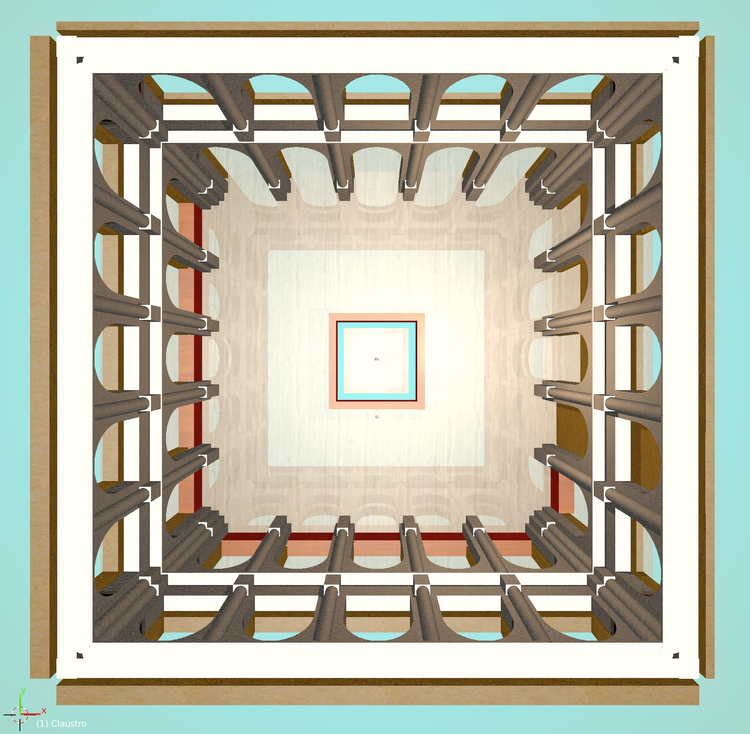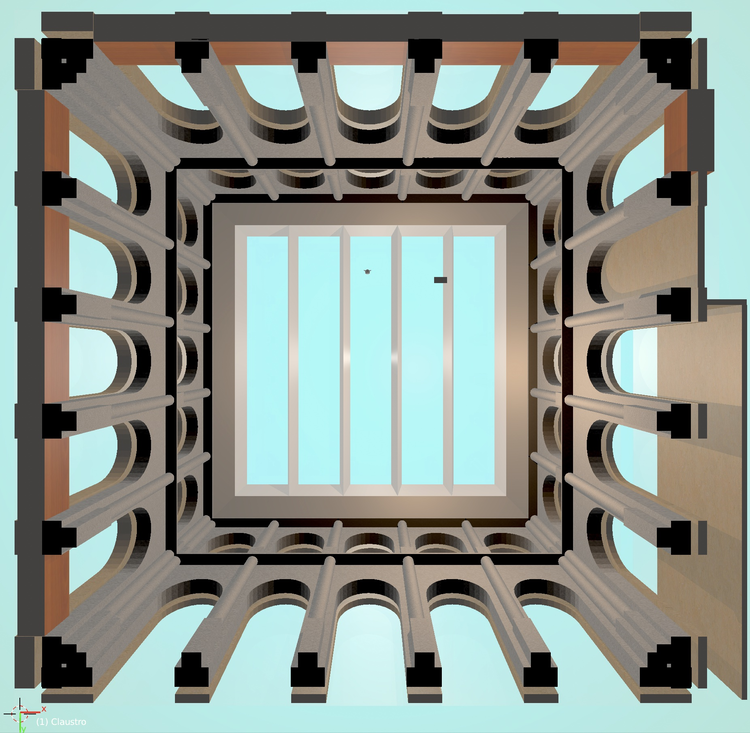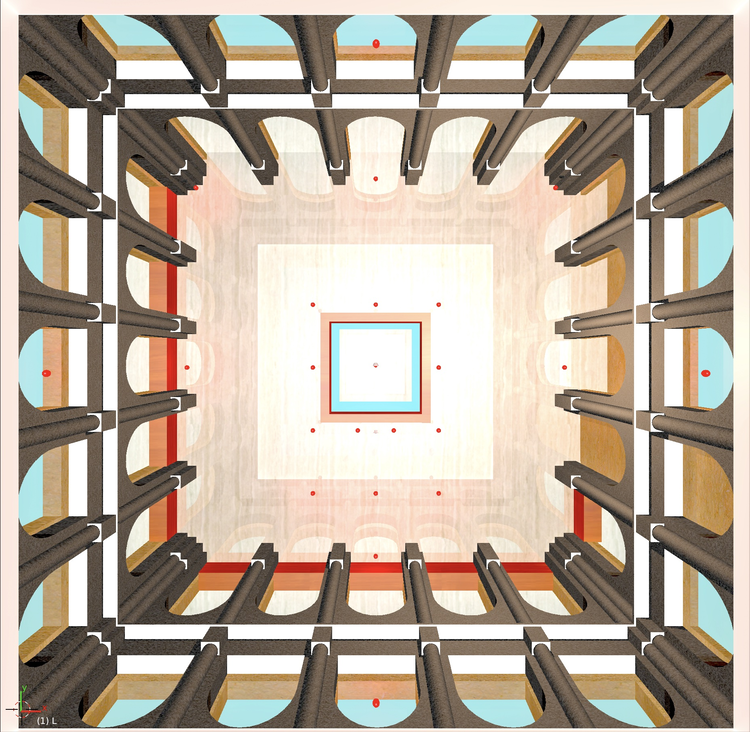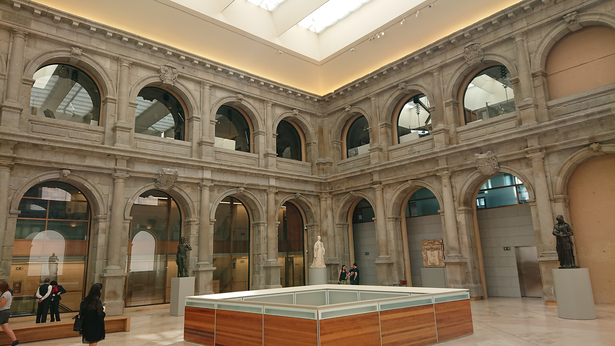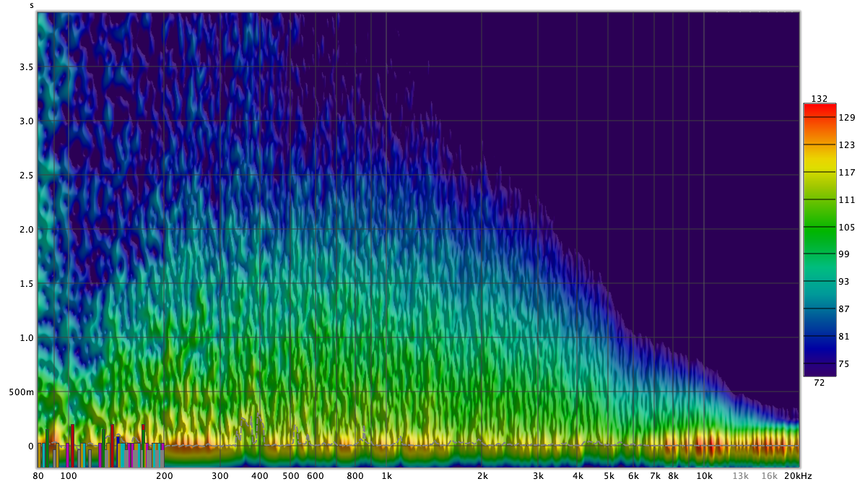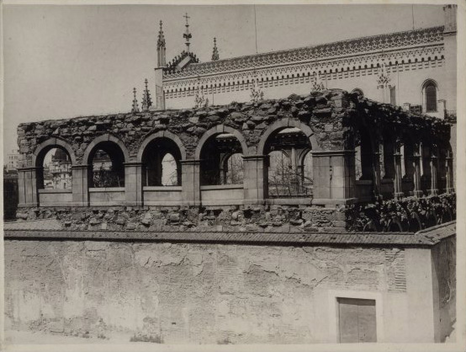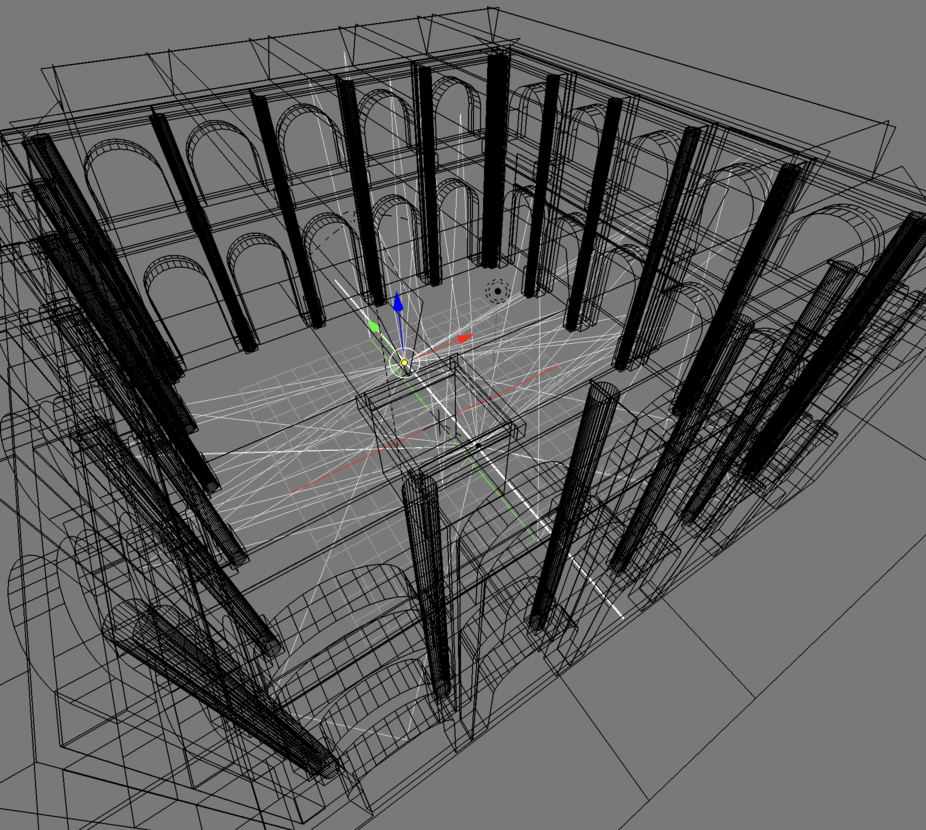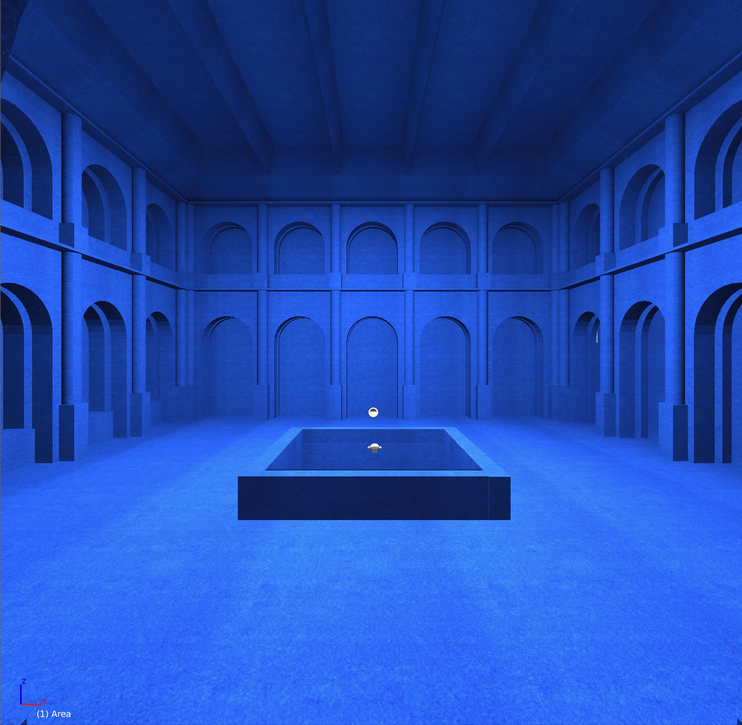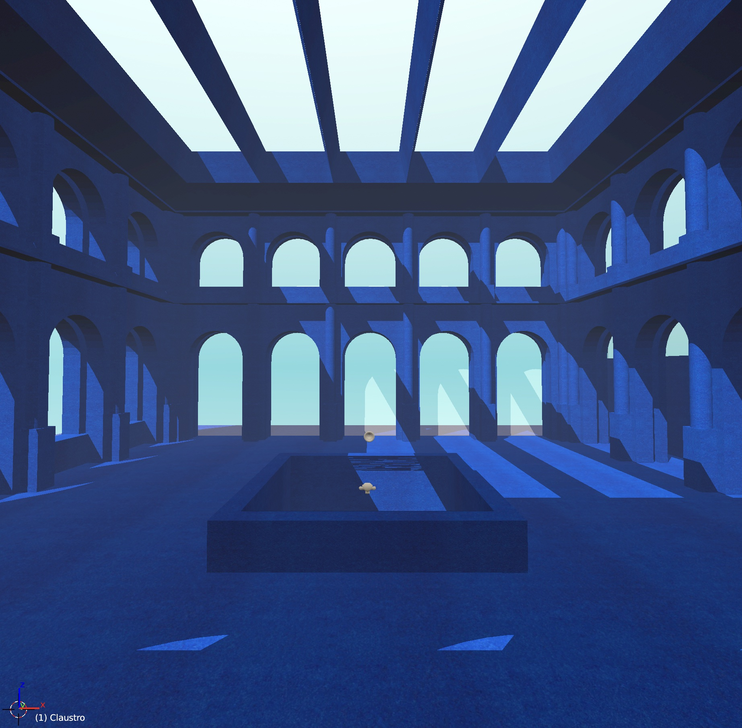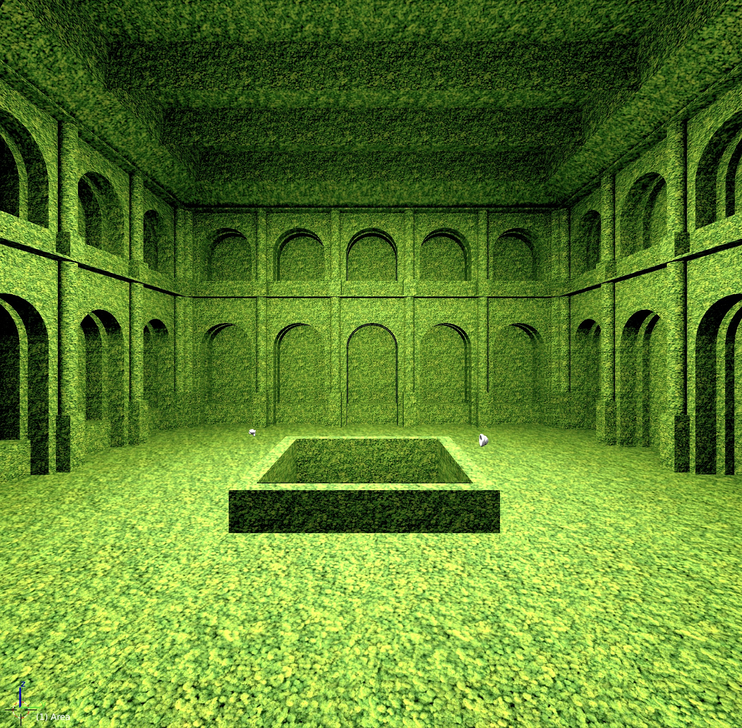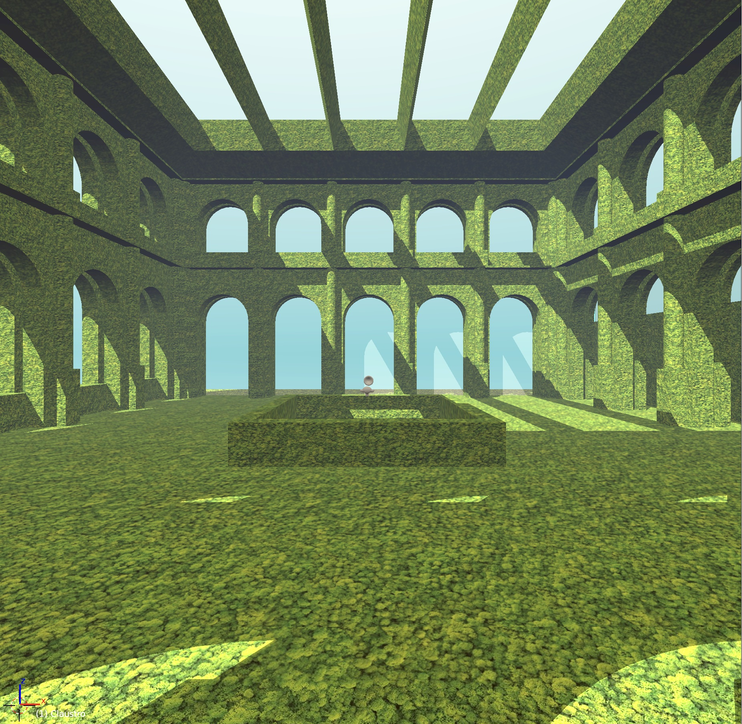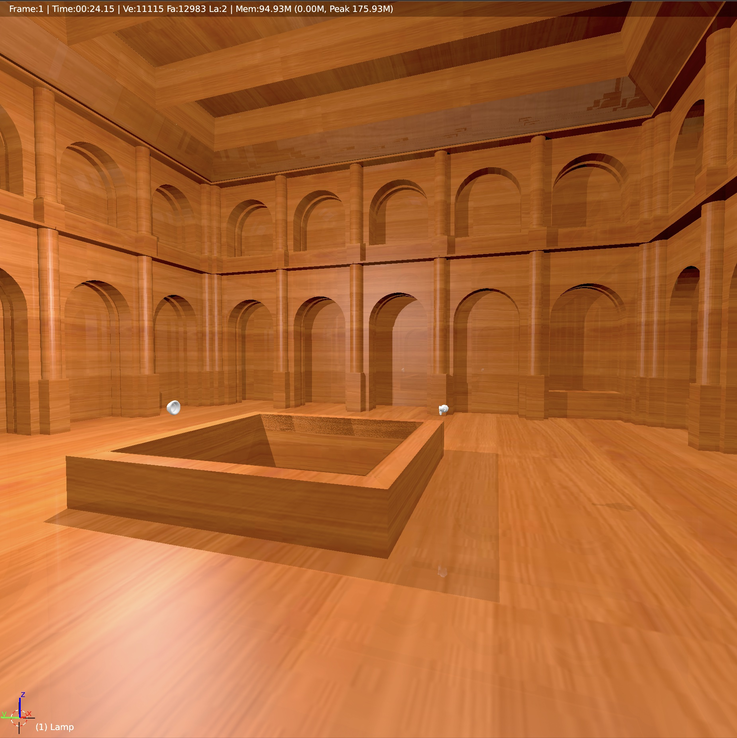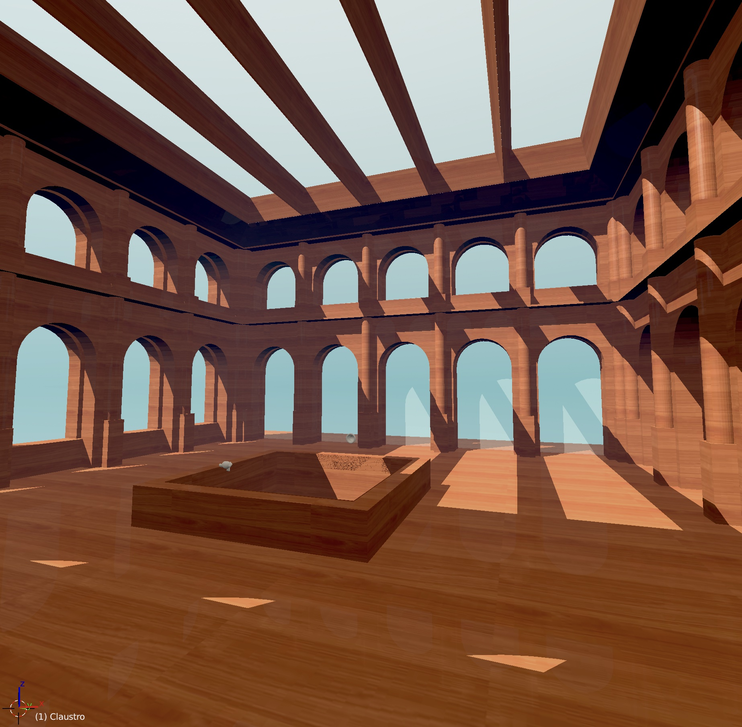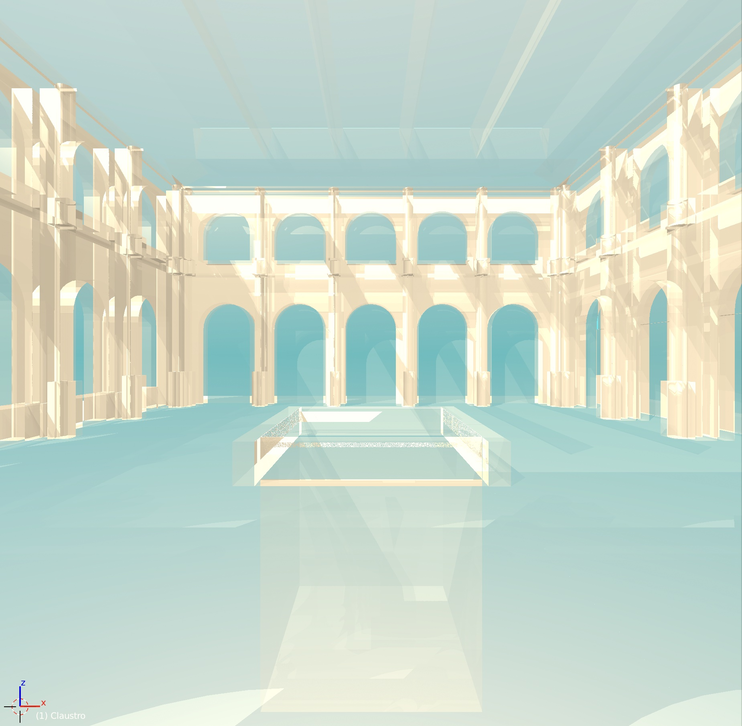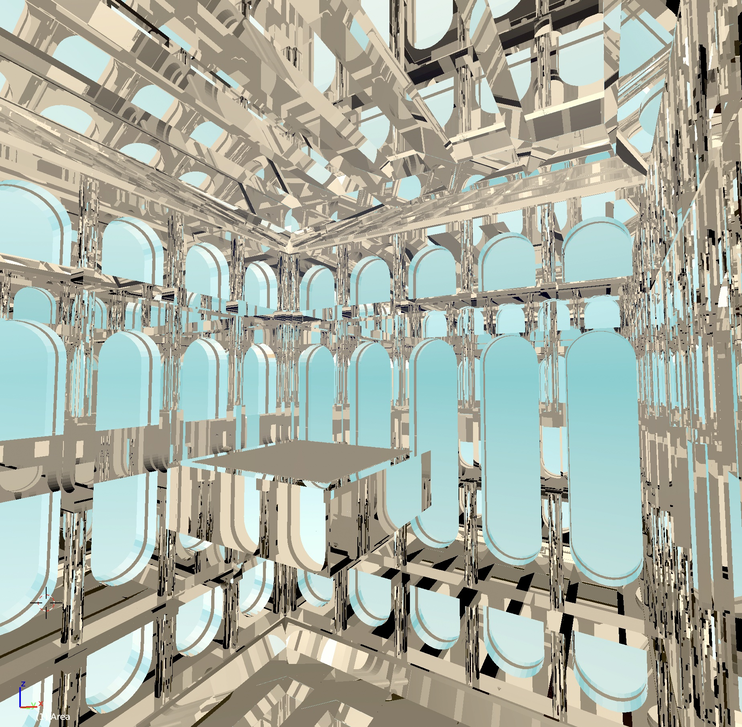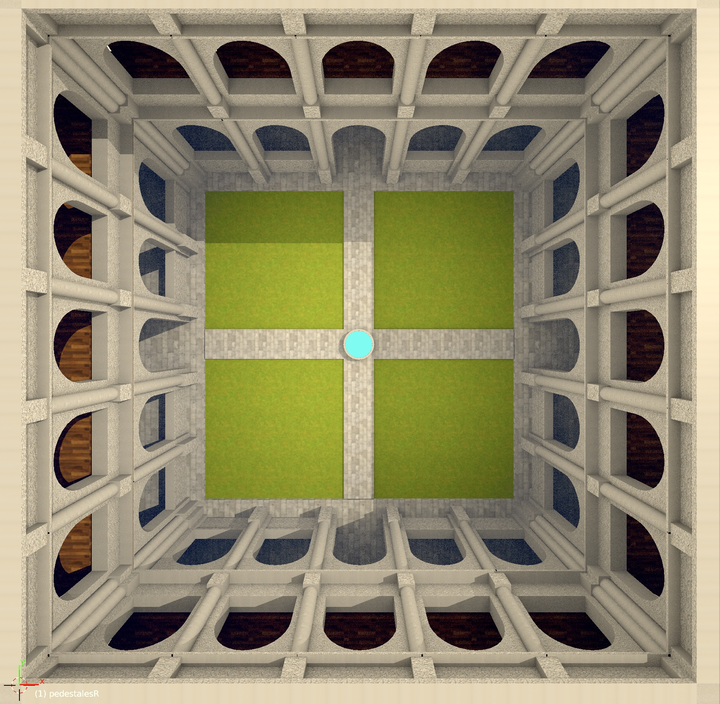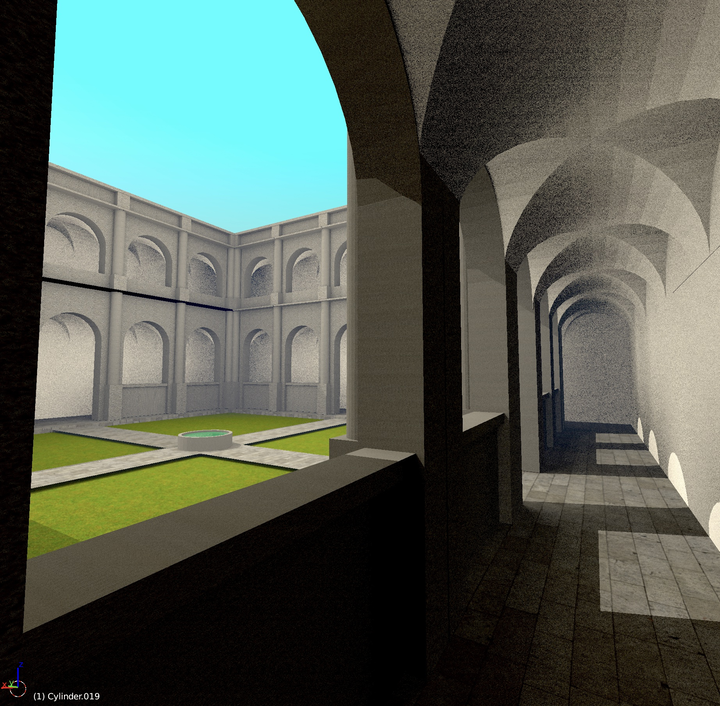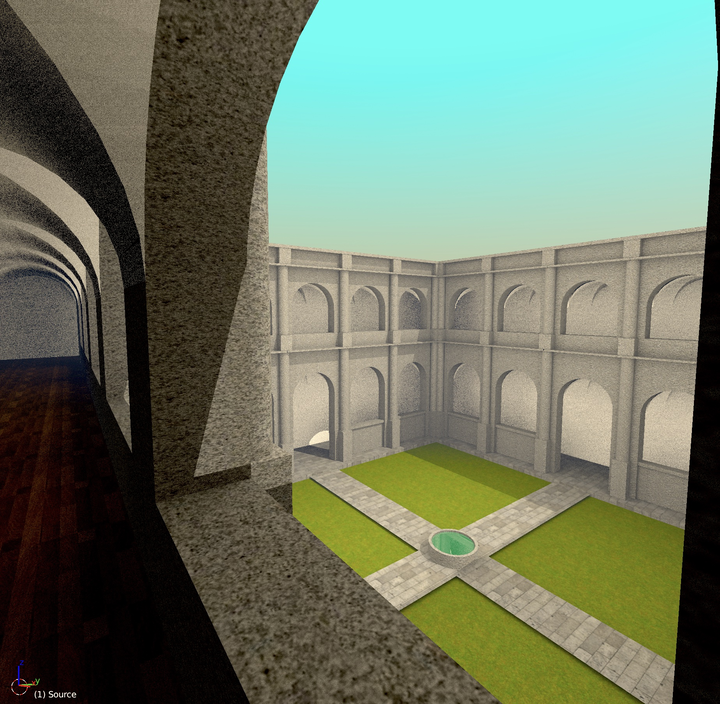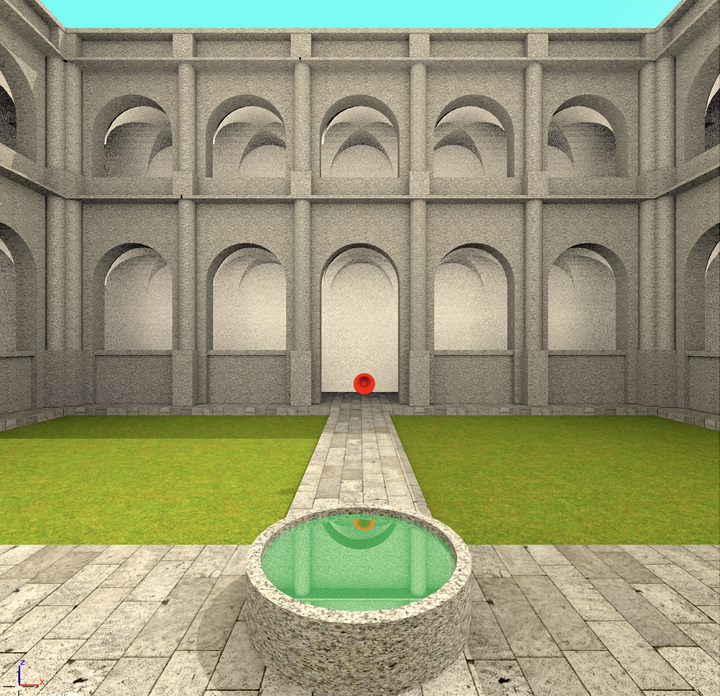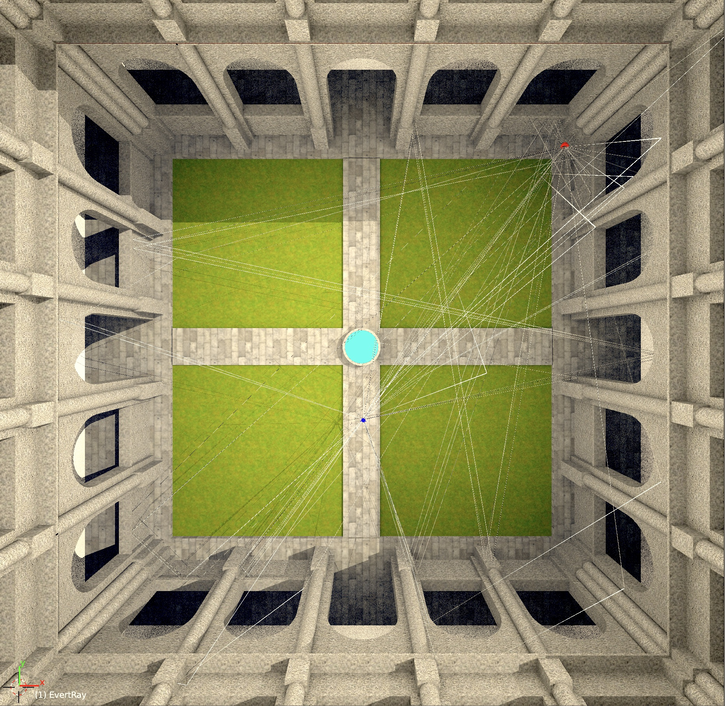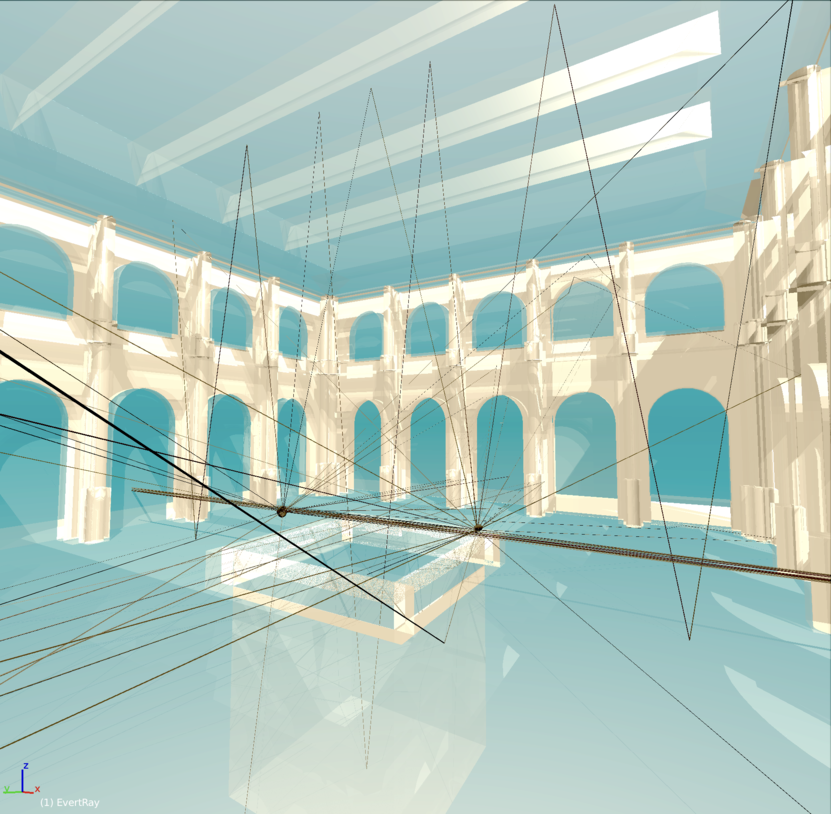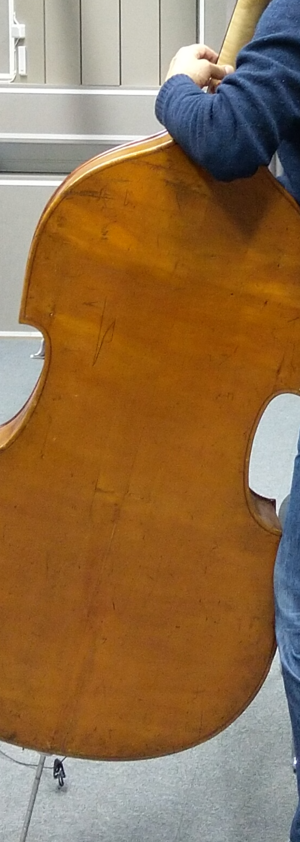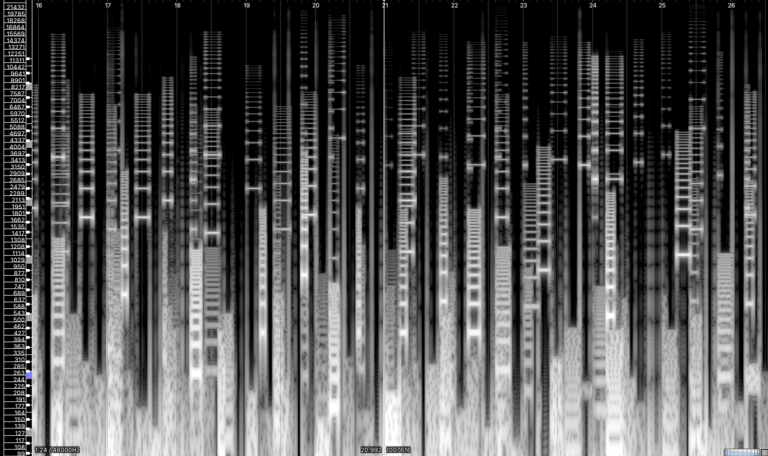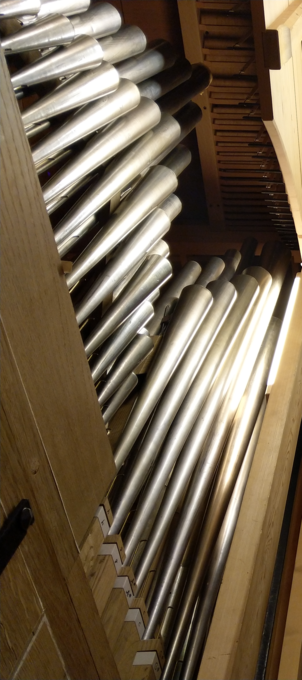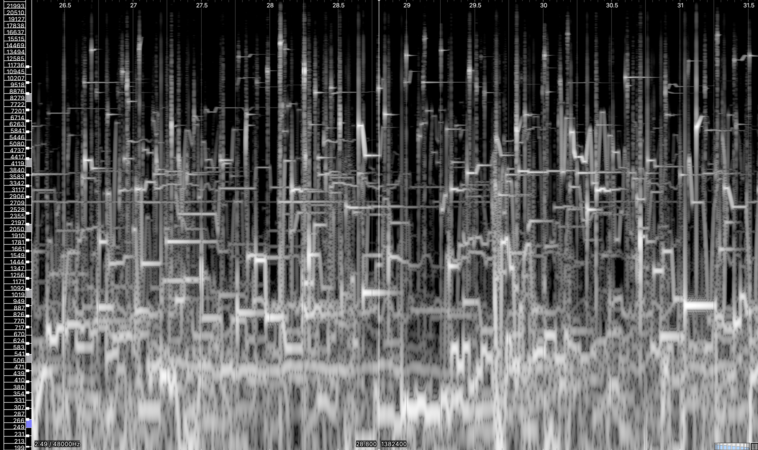Experiment 1:
What if we place a virtual source playing simultaneously
on the different measured spots?
What kind of sonic experience would we obtain?
Revisiting one of today's standard studio techniques.
A solo violin is recorded in the studio
playing Arcangelo Corelli’s Folia.
The different variations composing the piece
are overlapped and virtually placed
on each different point
by applying its measured impulse-response
via a convolution reverb.
Violin: Lina Soderholtz
3D model of the space realised on Blender, an open-source 3D computer graphics software.
The aim being the acoustic modelling of the space and not its graphic realistic rendering, only its main architectural components have been integrated in this prototype.
Measuring the acoustic response
of the space employing balloons
and an Ambisonic microphone.
Measurement campaign for 1 listening point
and a source placed in 5 different positions.
Experiment 6 / Improvisation 2
The previous experiments (4 and 5) consider several omnidirectional sound sources with a direct line of sight to the listener.
What if these sound sources were instead ultradirectional emitters never facing the listener or even hidden from her/his eyes?
Far from natural sound diffusion modes, spreading (unevenly) in all directions by default, we aim here at exploring the limits of traditional acoustics, a possibility already opened by recent technological advances in the domain of directional sound.
The surrounding environment will thus respond locally, with an overall image consisting on a series of more detached and localized reflections.
Cello: Ilaria Capalbo
Violin: Ricardo Atienza
PureData interface allowing the musician to operate a number of spatial parameters while improvising number and order of points in the space, delay loop, etc.
Experiment 5:
Can we transform the current acoustic properties of space?
What if we modify its materials?
Experimenting with how material variations might modify the acoustic response of a space is one of the key tools in room correction practices.
Can we take this design practice to an extreme and radically transform our virtual sonic space by making it entirely absorbent or even more reverberant for example? How would such space be experienced if entirely covered with a green wall, or with large glass/mirror panels?
Such transformations cannot usually be implemented when dealing with a piece of architectural heritage as it is the case here. It is however possible to explore some of their sensorial manifestations through auralisation tools, and open thus the door to a number of artistic practices concerned with different forms of extended reality.
Looking back in history,
this space was once one of the cloisters
of the Church of San Jerónimo el Real.
State of the cloister in 1929.
Auralisation of the cloister in its actual state.
24 IRs have been extracted for an equivalent number of source positions.
Experiment 7 / Electroacoustic composition:
Please check this page for a sonic album linked to this experiment.
A dialogue among alternative sonic configurations of a space.
Could these different sonic experiences of a space be compared and shared through electroacoustic means and formats?
As everyday listeners continuously confronted to the experience of space, we are all “experts” in intuitively deciphering its physical qualities through sound (dimensions, scales, proportions, materials, but also ambience factors such as humidity, temperature, etc.). This expertise is a skill that could be both exploited and challenged when comparing different possible realities of a physical space: altered configurations, materials, diffusion modes, source placement, etc.
To that aim, 3 different sonic textures have been specifically developed, all of them presenting a number of qualities focused on exploring in depth the acoustic properties of the space: transients, quick variations in terms of dynamics, pitch, envelope, harmonic structure.
a/ A synthetic extended organ: series of flat oscillators are juxtaposed and spatialised to generate in real-time a number of ephemeral and contrasted timbres and/or harmonic structures.
b/ Sampled violin: a large bank of short recordings (600 samples) is rapidly placed in different positions of the space. The recordings focus on the large dynamic and material qualities of the instrument. Contrasted families of samples are presented successively to reveal the characteristic sonic-spatial qualities of this cloister.
c/ The singing oscillator: groups of fast changing monophonic oscillators simulating organic patterns in real-time are distributed in space and placed in dialogue to study the transparency of the space in communication terms. Can these different voices be heard when playing simultaneously? Which density could be perceived as sustainable?
These materials have been generated (a & c) and spatially disposed (all) with the help of the open-source programming environment PureData.
The resulting electroacoustic piece, Jardin de Délices (Ambisonic format) has been selected by the international call The Space Laboratory 2022 and played in Museo Reina Sofía, Madrid on October 13th 2022. The piece was exported to an octophonic format for the occasion. A second presentation took place on October 20th at GME (Gabinete de Música Electroacústica), Cuenca, Spain.
Three passages of this piece have been shared above (to the right) corresponding to the three different sound material families, as well as the entire piece (to the right), all of them in binaural format.
Violin: Ricardo Atienza
Spectrogram of the acoustic response of the space (impulse-response), corrected according to the characteristics of the balloon signal.
Analysis realised on the open-source software RoomEQ.
3D reconstruction of a possible configuration
of this renaissance cloister as originally conceived
by Fray Lorenzo de San Nicolás in 1671.
Based on other similar buildings from the same period.
Experiment 4 / Improvisation 1
Please check this page for a sonic album linked to this experiment.
Could we establish a dialogue with a virtual sonic space?
Could an auralisation be experienced as a space for improvisation?
Traditionally, musicians and sound engineers have used this tool for creating an illusion, transporting the listener (at times also the musician) to a different space from the recording studio. This of course influences the way in which a musician plays as providing a needed acoustic feedback.
But can we take this practice further to transform this supportive virtual space into the main partner of a musical exchange? A space that will finally also act as a mirror of our own playing.
In this experiment, the improviser is invited to enter in resonance with the auralised space. The sound of the instrument is captured and virtually placed in real-time as a recurring delayed loop in different positions of the space. Based on an Ambisonic setup, the musician can hear on the fly the resulting sonic space through a surround system or headphones.
Improvisers: Niklas Billström, Ilaria Capalbo, Leif Jordansson, Robin McGinley and Paul Pignon.
Auralisation of the historical reconstruction of the space.
24 IRs have been extracted for an equivalent number of source positions.
Experiment 3:
How would the same organ sound within today’s cloister at Museo del Prado?
Drastic changes took place in acoustic terms when the space was reconstructed as a part of Museo del Prado: today it is a covered space with a glass roof, the vaulted galleries are not present anymore with large glass elements on the previously open arches, and a marble floor covers now what was a much softer ground (maybe just grass, maybe a more complex garden?).
The different bodies of the organ are now surrounding a listener who turns its head in search of different aural perspectives.
Organ: Michael Dierks, German Church in Stockholm, baroque organ.
Experiment 2:
From the centre of the cloister it was certainly possible to hear the sound of a distant organ in the adjacent church. Could we recreate such a listening experience?
For this experiment, the baroque organ at the German church in Stockholm has been recorded from the inside, in order to obtain a sound as dry as possible, with no reflections from the environing space. To that aim, 5 different mics (including 1 Ambisonic) have been used to capture the sound of the different bodies of the instrument from a close distance. A first impulse-response (IR) has been applied to this recording in order to virtually “place” it within the German church. Secondly, a new IR has been added corresponding to a sound emitted from this linking space between church and cloister, and heard from the centre of the space.
Organ: Michael Dierks, German Church in Stockholm, baroque organ.
